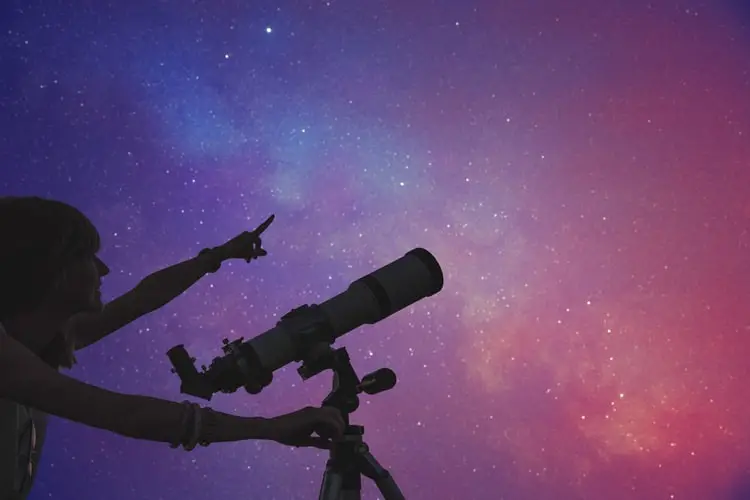If you’ve ever relaxed outdoors on a night with clear skies, you’ve gotten a glimpse of the wonders of the universe, but there’s so much more to see. If you appreciate a beautiful starry sky or are fascinated by the mysteries of distant galaxies, stars, and planets, stargazing is an incredibly satisfying hobby. Here’s everything you need to know to get started with astronomy for beginners, exploring the amazing, captivating universe from the comfort of your backyard or any quiet stargazing location of your choosing. You’ll learn:
- Astronomy for Beginners: What is Astronomy?
- Where’s the Best Place For Stargazing?
- What Equipment Do I Need to Stargaze?
- What Can I See In the Night Sky?
- When is The Best Time to Stargaze?
- How Can I Learn More About Astronomy for Beginners?
Astronomy for Beginners: What is Astronomy?

Put simply, astronomy is the science of studying the stars – or, if you prefer, stargazing. It’s one of the oldest sciences in the world, as both individuals and civilizations have been looking to the stars for tens of thousands of years.1 Our ancestors were fascinated by those distant lights in the sky and invented gods and myths to answer the questions they found themselves asking.
We’ve learned a lot about the universe in the intervening years, especially since the telescope’s invention at the beginning of the 17th century. In 1610, the Italian astronomer Galileo Galilei turned his home-made telescope toward Jupiter and discovered its four largest satellites. Quite a revolutionary discovery, these moons were the first to be discovered orbiting another world.2
That was the start of the telescopic age, and where we once used just our eyes or a telescope to learn more about the planets, we now send unmanned space probes to investigate those distant worlds. The space age of the past fifty years has brought our knowledge of our nearest neighbors – and the universe as a whole – to a level that might have been unimaginable to Galileo and his contemporaries.
In the past 100 years, we’ve discovered the existence of galaxies far beyond our own and speculated upon the origin of the universe itself. Black holes, pulsars, and quasars have all been discovered, and while we continue to learn more about these strange phenomena, a myriad of questions still remain.3
Astronomy, then, is not just the study of the stars but also of the cosmos itself and our place within it. The questions our ancestors once asked are as relevant today as they were millennia ago, and while scientists around the world continue to investigate and theorize, amateur astronomers continue to seek answers through their own observations.
In doing so, they enhance their understanding of the cosmos and form their own connection to the stars they see in the skies above them. Today, anyone can get into astronomy for beginners. Astronomy is accessible to stargazing novices and experienced astronomers alike, whether you simply enjoy taking in the beautiful starry night skies or want to get a deeper glimpse into the universe with a telescope.
This, perhaps more than anything, is reason enough to start looking up!
Where’s the Best Place for Stargazing?
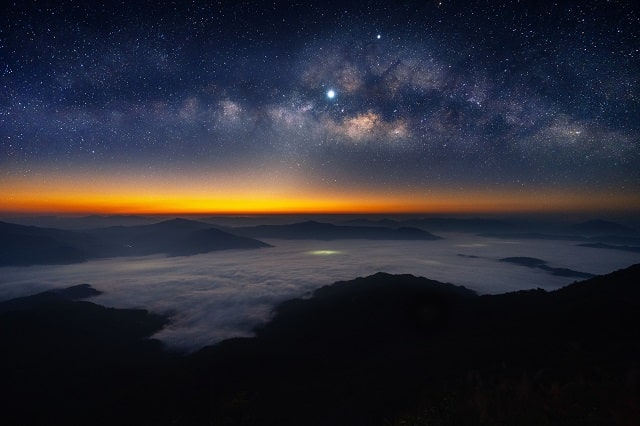
If you live in the suburbs of a town or city, you’ve probably noticed that you can’t see very many stars. That’s because the streetlights (not to mention the lights from buildings, such as office blocks, houses, and sports arenas) project light in almost every direction, including upwards into the sky.
As a result, the sky becomes bright, drowning out the fainter stars. If you’ve ever gone to a game involving your favorite team at night, you’ll see that the spotlights make it almost impossible to see any stars in the sky.
The problem of light pollution has grown steadily worse over the years. The International Dark Sky Association was founded in 1988 to protect our night skies and has an interactive map showing locations they’ve identified as being a dark sky site.4
If you want to get the best experience as an astronomy beginner, it’s best to get as far away from city lights as possible. For example, if you live near a national park, this might be a good place to get a better view of the night sky (assuming, of course, it isn’t a forest with trees that will block your view!)
From a truly dark location, you won’t see just a handful of stars; you’ll see thousands, and even experienced astronomers can have difficulty identifying the constellations under those conditions, let alone astronomy beginners! The Milky Way, our own galaxy, can be seen arcing overhead, from horizon to horizon, and has even been known to cast shadows.5
That being said, there’s no reason why you can’t enjoy stargazing by simply stepping out into your backyard – and you won’t need to spend a dime to get started!
What Astronomy Equipment Do I Need to Stargaze?
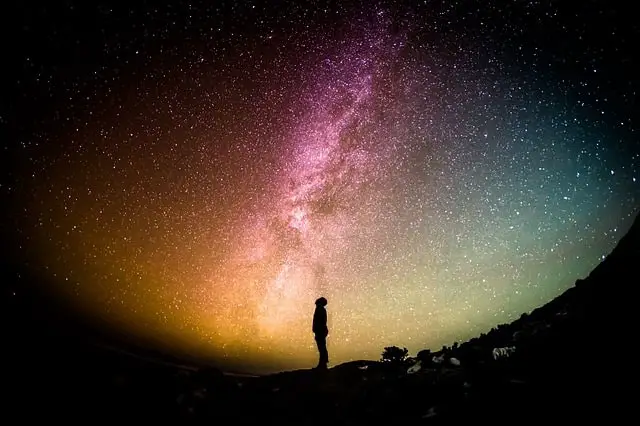
None! One of the best things about astronomy for beginners is that you don’t need any expensive equipment to enjoy the night sky – you only need your eyes and a desire to learn about the stars above us. In fact, it’s recommended that you familiarize yourself with the constellations first before treating yourself to a telescope.
In that regard, there are a multitude of fine books on astronomy for beginners available to help you learn, or you could install a smartphone app that can identify the stars for you. All you’ll need to do is point your smartphone towards the sky, and the app will do the rest. These apps are also great for simulating how the sky will appear on any given night.
Once you’re comfortable with the night sky, you’ll probably want to buy a telescope, but there’s another piece of equipment you might already have – binoculars. Regular binoculars, such as 7×35’s or 10×50’s, can greatly expand your view of the universe, and they have the added benefit of being extremely portable!
When it comes to telescopes, stick to a reputable brand, such as Celestron, Meade, or Orion. Those cheap, department store scopes that promise a magnification of 1000x are typically very poor quality! Both Celestron and Orion produce small, good quality starter scopes for about the price of a family meal.
Lastly, if you’re not sure how to proceed, reach out to a local astronomical society or join a Facebook group and ask for their advice. There are sure to be a lot of folks willing and able to offer you some free advice.
For an in-depth look at the equipment you might need for astronomy, check out The 6 Best Astronomy Tools for Observing the Night Sky.
What Can I See In the Night Sky?

There’s more to the night sky than simply the Moon and stars. For starters, with a little practice, you can easily pick out the five planets visible to the naked eye: Mercury, Venus, Mars, Jupiter, and Saturn.6 The best way to learn how to identify a planet is to use a magazine or software to see when the Moon is close to one.
While you don’t need to use equipment to experience the joys of stargazing, a telescope can make astronomy for beginners even more fascinating. Turn a telescope toward the planets, and you’ll see some amazing sights. Both Mercury and Venus will show phases like the Moon, while dark surface markings and ice caps can be seen on Mars.78
The four largest moons of Jupiter (as discovered by Galileo in 1610) can be seen with binoculars, and even a small telescope will reveal dark cloud belts in the planet’s atmosphere.910
Want to see the rings of Saturn? Those are relatively easily seen through a small telescope, too, along with a handful of the planet’s largest and brightest moons.11 Staying within our solar system, you can explore the outer planets of Uranus and Neptune with a telescope, as well as asteroids and the occasional passing comet.12
And what of the stars themselves? Many are multiple in nature; in other words, they might appear as a single star to the naked eye, but a telescope will split that star in two. For example, the double star Albireo in the constellation Cygnus, the Swan, is comprised of a golden star with a companion that appears sapphire blue.13
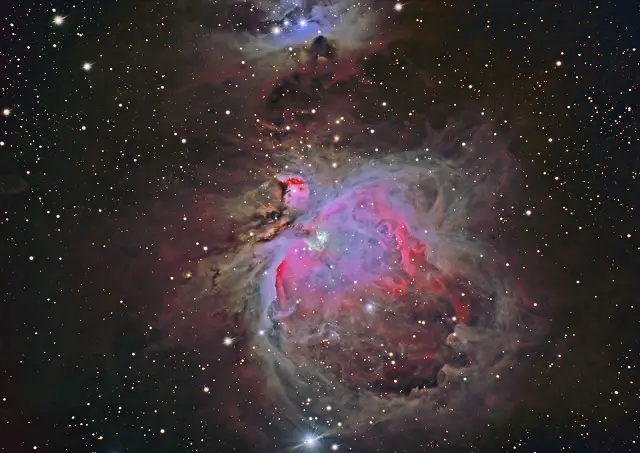
Nebulae, such as the Great Orion Nebula, are huge clouds of gas and dust in space, the birthplace of the stars themselves.14 Star clusters, often containing hundreds or even thousands of stars, can be quite stunning through a telescope, with the famous Pleiades being the most beautiful of them all.15
Globular clusters are spheres of hundreds of thousands of stars that form a halo around the Milky Way, our home galaxy.16
If you want to see other galaxies, you can glimpse the Andromeda Galaxy from a dark location, while telescopes will place galaxies millions of light years away within your grasp.17
When is The Best Time to Stargaze?

Anytime you can see the stars! Even from suburban skies, the brightest stars are visible and can cause us to look up at the sky and wonder. Many astronomers – both astronomy beginners and professionals – simply can’t pass up the opportunity to stop and, quite literally, gaze at the stars.
But what are you gazing at? If you’re familiar with the night sky, you can readily identify the brightest stars and constellations, but if you’re new to the hobby, you’ll need to find your way around the sky first.
Fortunately, there’s a group of stars that can help, and you may already be familiar with them. The seven brightest stars of the constellation Ursa Major, the Great Bear, form a pattern (called an asterism) known as the Big Dipper in North America, or the Plough in Europe.18
These seven stars can point you to other stars and constellations. One of the first things many people learn when getting started with astronomy for beginners is that if you draw a line through the outer two stars of the dipper’s bowl, you’ll arrive at Polaris, the North Star.19
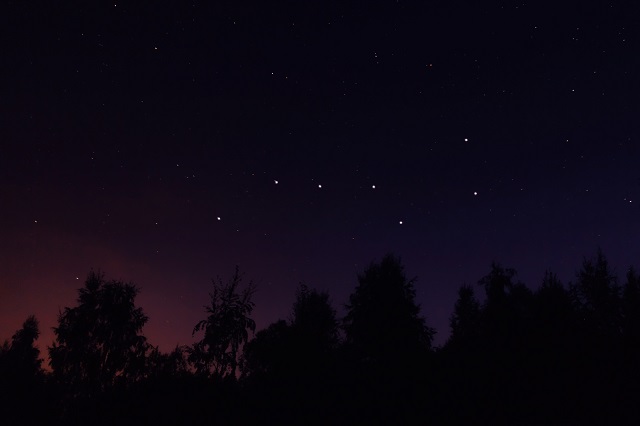
The good thing about the Big Dipper is that it’s visible throughout most of the year, so it’s an easy constellation for most astronomy beginners to spot. It’s circumpolar, which means it circles Polaris.20 You can go outside at almost any time on nearly any night, and you’ll find it hanging in the skies above you.
That said, the Big Dipper skims the northern horizon during autumnal nights and sinks entirely from the southern United States. It starts to rise again during the winter (when it appears in the three o’clock position compared to Polaris), but winter holds another useful signpost to the stars.[Rao J. For stargazers, the Big Dipper is a celestial compass, clock, calendar and ruler. Here’s how to use it. Space.com. https://www.space.com/big-dipper-swiss-army-knife-for-skywatchers.html. Published February 11, 2020. Accessed January 21, 2021.[/efn_note]
The constellation Orion, the Hunter, has some of the brightest stars in the sky and is also well known to many astronomy beginners.21 Like the Big Dipper, you can use it to find other bright stars and constellations.
For example, follow the three stars of Orion’s belt upwards, and you’ll come to Aldebaran, the orange star that marks the eye of Taurus, the Bull. Draw a line downwards from his belt, and you’ll come to Sirius, the brightest star in the entire night sky.22
How Can I Learn More About Astronomy for Beginners?
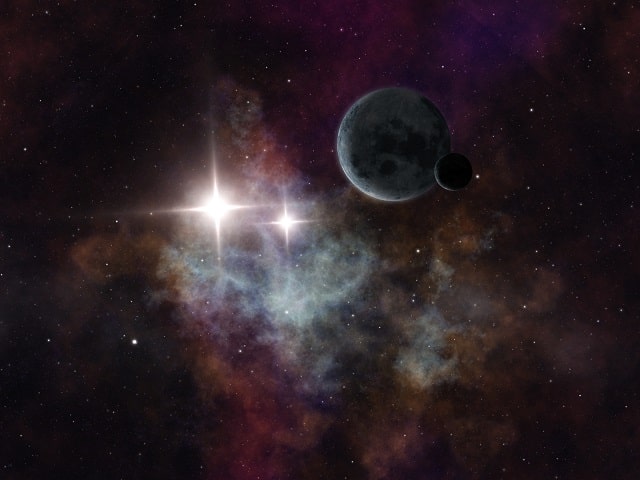
Want to learn more about astronomy for beginners? If you like reading, you could always pick up a book to learn more about the night sky. Nightwatch by Terence Dickinson is a great place to start, while Turn Left at Orion by Guy Consolmagno and Dan M. Davis is an indispensable guide for telescopic observers.
You could also subscribe to a magazine, such as Astronomy or Sky & Telescope. Not only do both publications have monthly guides to what’s up in the sky, but they also include insightful articles on a variety of different subjects.
In terms of software, SkySafari is an excellent app for your smartphone (whether it’s Android or Apple), while Stellarium is an amazing free planetarium program for Windows, Macs, and even Linux machines.
Whether you pick up a book or install an app to learn more about astronomy, it’s always a good idea to also join a local group. Many have their own websites, with Go Astronomy maintaining a comprehensive global directory.
Almost all clubs and societies have regular meetings, often with guest speakers, and if you’re not able to attend in-person, the event is typically also live-streamed online. There will likely continue to be online option for the event given how likely event organizers are to continue hosting virtual events in 2022 and beyond. When conditions allow, members will sometimes meet at a dark sky location for observing sessions, with other nights reserved for public viewings and outreach programs.
You can also join a Facebook group and talk to almost anyone from across the world. Groups range from general astronomy to more specialized topics, such as astrophotography, astrophysics, or binocular astronomy, and there are plenty of groups for beginners available. For example, the Observational Astronomy for Beginners group has over 13,000 members.
Regardless of the steps you take next, there’s one thing that every aspiring astronomer should do at every opportunity – go outside and gaze at the stars. As you stare, remember that you’re gazing upon the same stars that your ancestors once looked upon, thousands of years ago. And who knows? Maybe in another few thousand years, your own descendants could actually be exploring them!
Additionally, if you’re looking for additional resources on stargazing, we have a number of articles that you might find interesting.
First off, we’ve created guides on a variety of astronomy related topics, such as our guide to determining how much a telescope should cost, our guide to how to use a telescope, our beginner’s guide to astronomy (which you’re reading now), and our guide on how to buy your first telescope. We’ve also created a series of helpful guides for kids, such as our list of astronomy facts (which any kids or beginners will no doubt find interesting), and our breakdown of astronomy for kids.
We’ve also created a series of buying guides, including our guide to evaluating the best telescopes for beginners, and our guide to the best astronomy binoculars.
In addition to those guides, we’ve also created a series of in-depth reviews of a variety of telescopes and astronomy binoculars. You can check them out before you buy to find out the best accessories, pros and cons for different models, and even to see what they look like unboxed. If you’re considering buying a telescope we have a series of reviews that also serve as how to guides. You can get our series of guides to individual telescopes as well, including our review of the following telescopes and binoculars: our Celestron Firstscope review, Celestron Travel Scope 80 Telescope Review, SkyGenius 10×50 Binoculars review, Celestron Travel Scope 80 Telescope review, Opticron Adventurer II 10×50 Binocular review, Orion Astronomy 15×70 Binoculars review, Orion XT6 Dobsonian Telescope review, Orion Scenix 7×50 Binocular review, Celestron ExploraScope 114AZ Telescope review, Zhumell Z100 Telescope review, and our Sky-Watcher Heritage 130 Telescope reviews, to really be able to dive into the different telescope and astronomy binocular models.
Article Sources
Moon and Back uses only high-quality sources, including peer-reviewed studies, to support the facts within our articles. Read our editorial process to learn more about how we fact-check and keep our content accurate, reliable, and trustworthy.
- Betz E. Why astronomy is considered the oldest science. Astronomy.com. https://astronomy.com/news/2020/10/why-astronomy-is-considered-the-oldest-science. Published October 6, 2020. Accessed January 21, 2021.
- Uri J. 410 Years Ago: Galileo Discovers Jupiter’s Moons. Nasa.gov. https://www.nasa.gov/feature/410-years-ago-galileo-discovers-jupiter-s-moons. Published January 9, 2020. Accessed January 21, 2021.
- Astronomy And Space Science: Pulsars, Quasars, And Distant Questions. Encyclopedia.com. https://www.encyclopedia.com/science/science-magazines/astronomy-and-space-science-pulsars-quasars-and-distant-questions. Accessed January 21, 2021.
- Our Work. Darksky.org. https://www.darksky.org/our-work/. Accessed January 21, 2021.
- Webb R. Cosmic dust bunnies cast the darkest known shadows. Newscientist.com. https://www.newscientist.com/article/dn25622-cosmic-dust-bunnies-cast-the-darkest-known-shadows/#ixzz6kC9eMnwT. Published May 23, 2014. Accessed January 21, 2021.
- Visible Planets Guide – When And Where To View (2021). Farmersalmanac.com. https://www.farmersalmanac.com/visible-planets-guide. Accessed January 21, 2021.
- Bryant J. Phases of Planets. Wolfram.com. https://demonstrations.wolfram.com/PhasesOfPlanets/. Published March 7, 2011. Accessed January 21, 2021.
- Mars As Seen From Earth. Britannica.com. https://www.britannica.com/place/Mars-planet/Mars-as-seen-from-Earth. Accessed January 21, 2021.
- Uri J. 410 Years Ago: Galileo Discovers Jupiter’s Moons. Nasa.gov. https://www.nasa.gov/feature/410-years-ago-galileo-discovers-jupiter-s-moons. Published January 9, 2020. Accessed January 21, 2021.
- Owen TC. Jupiter. Britannica.com. https://www.britannica.com/place/Jupiter-planet. Published March 13, 2020. Accessed January 21, 2021.
- Macrobert A. Viewing Saturn: The Planet, Rings and Moons. Skyandtelescope.org. https://skyandtelescope.org/observing/viewing-saturn-the-planet-rings-and-moons/. Published May 13, 2003. Accessed January 21, 2021.
- Ice Giants: Neptune and Uranus. Skyandtelescope.org. https://skyandtelescope.org/observing/ice-giants-neptune-and-uranus/. Published July 29, 2020. Accessed January 21, 2021.
- McClure B. Albireo, beloved double star. Earthsky.org. https://earthsky.org/brightest-stars/albireo-finest-double-star. Published August 4, 2019. Accessed January 21, 2021.
- Garner R. Messier 42 (The Orion Nebula). Nasa.gov. https://www.nasa.gov/feature/goddard/2017/messier-42-the-orion-nebula. Published October 9, 2017. Accessed January 21, 2021.
- Mann A. Pleiades: The Seven Sisters Star Cluster. Space.com. https://www.space.com/pleiades.html. Published October 8, 2019. Accessed January 21, 2021.
- Howell E. Globular Clusters: Dense Groups of Stars. Space.com. https://www.space.com/29717-globular-clusters.html. Published July 22, 2015. Accessed January 21, 2021.
- Andromeda Galaxy. Indiana.edu. https://www.astro.indiana.edu/novasearch/andromeda.html. Accessed January 21, 2021.
- Ursa Major. Britannica.com. https://www.britannica.com/place/Ursa-Major. Published March 26, 2020. Accessed January 21, 2021.
- Rao J. The North Star: Polaris. Space.com. https://www.space.com/15567-north-star-polaris.html. Published May 16, 2017. Accessed January 21, 2021.
- What are Circumpolar Stars? Nineplanets.org. https://nineplanets.org/questions/what-are-circumpolar-stars/. Accessed January 21, 2021.
- Orion. Britannica.com. https://www.britannica.com/place/Orion-constellation. Published November 14, 2019. Accessed January 21, 2021.
- Use Orion’s Belt to find other stars. Earthsky.org. https://earthsky.org/sky-archive/use-orions-belt-to-find-two-other-stars-2006. Published December 5, 2017. Accessed January 21, 2021.
